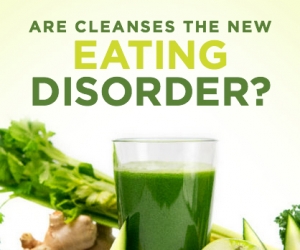Sugar: Delicious But Dangerous
Why you should break the sugar habit
White sugar, brown sugar, corn syrup - it's all deliciously addictive and terrible for your health. The sugar-laden diet of most Americans is literally killing us. There's no safe amount of sugar to eat - even a little is bad news.
Our health experts discussed with LadyLUX why sugar is so dangerous, and what you need to know to achieve better health.

Sugar, in all its many forms, is dangerous to your health. LadyLUX talked to health experts to find out exactly why it's so bad for you, and what alternatives you should use.
Even Katie Couric is working to make people more aware of the dangers, releasing a recent documentary “Fed Up,” about America's obesity epidemic.
LadyLUX: What harmful effects can sugar have on you?
Dr. Elizabeth Trattner: Sugar is not good for your body period, except in the form of complex carbohydrates and fruit. Almost two-thirds of the American population is obese and 35-40% have metabolic syndrome. 18.2 million US individuals have diabetes which is now appearing in teens as kids as well. Also, spikes in sugar shorten our telomeres which cause aging and disease.
Dr. David Platt: Sugar is the single worst ingredient in the modern diet, for many reasons. It contains no essential nutrients and is bad for your teeth. Added sugar is high in fructose, which can overload your liver. It is a leading contributor to obesity in both children and adults. Due to its effect on hormones and the brain, sugar has unique fat-promoting effects. Because it causes massive dopamine release in the brain, sugar is highly addictive. Evidence is mounting that sugar, not fat, may be one of the leading drivers of heart disease. Finally, many scientists believe that having constantly elevated insulin levels—a consequence of sugar consumption—can contribute to cancer.
LadyLUX: Is there a safe amount of sugar to eat?
Dr. Barry Sears: If you mean refined sugars like table sugar, high fructose corn syrup, or honey then the answer according the new guidelines from the American Heart Association (AHA) is about 5% of total calories. That's about 25 grams of sugar per day. For comparison, the typical can of regular soda has about 40 grams of sugar. However, it is not just the sugar, but the total levels of carbohydrates that is often the problem since excess glucose (sugar is one half glucose and one half fructose) is a driver of inflammation I like to keep the total carbohydrate intake (including fiber) to about 150 grams per day. That is about 50-67% fewer carbohydrates than what Americans are currently consuming.
Dr. Ellen Albertson: The World Health Organization has set the recommendation for added sugar at 5%of total daily calories (about 25 grams or 6 teaspoons per day). The American Heart Association (AHA) recommends adult women consume no more than 5 teaspoons (20 grams) per day.

LadyLUX: What happens to our bodies when we eat sugar?
Dr. Albertson: Sugar is made of both glucose and fructose. After you eat sugar the sugar molecules pass from your stomach into your bloodstream where with the help of insulin they are delivered to and used by cells all over your body for fuel. If you consume more sugar than your body needs the access sugar is stored as fat. Fructose is broken down mainly by the liver and then converted into fat.
LadyLUX: Does too much sugar cause diabetes?
Dr. Platt: Yes. To see why, think about insulin, a very important hormone in the body. Insulin allows glucose—blood sugar—to enter cells from the bloodstream and tells the cells to start burning glucose instead of fat. Having too much glucose in the blood is highly toxic and one of the reasons for diabetes and its complications, such as blindness. One result of diets high in sugar is that insulin stops working as it should. The cells become “resistant” to it. This is also known as insulin resistance, which is believed to be a leading driver of many diseases, especially Type 2 diabetes.
LadyLUX: Are Americans eating more sugar than in the past?
Dr. Albertson: Yes, sugar intake has risen steadily. 200 years ago the average American ate only 2 pounds per year. In 1970 the average sugar intake was around 120 pounds per year, by 1995 it peaked at 150 pounds per year. It’s gone down slightly since 1995. In 1999-2000 it was 18% of calories. Now it about 13% of our daily calories.

LadyLUX: Is sugar hidden in some of the foods we eat?
Dr. Trattner: Most packaged food, almost all fast food, and anything that is man made usually has some form of sugar and the big bad one is high fructose corn syrup.
LadyLUX: Are some types of sweeteners better than others?
Dr. Albertson: Yes, I’d suggest steering clear of artificial sweeteners such as aspartame and sucralose (i.e. Splenda) and sweeteners that are higher in fructose (which are broken down in the liver) such as agave and high fructose corn syrup. Sugar is about half glucose and half fructose. Your best bet is stevia, a natural herb that is very sweet (25-30 times sweeter than sugar) yet calorie free. It also won’t spike your blood.
LadyLUX: Are certain types of sugar better than others?
Dr. Sears: It depends on the glycemic index of the carbohydrate source. The lower the glycemic index, the slower the glucose enters the body. Surprisingly, glucose enters the body more slowly when eating sugar compared to eating bread (including whole grain), rice, or potatoes.
Dr. Trattner: Yes, whole grains like brown rice, quinoa, millet, oatmeal and tubers like sweet potatoes and Jerusalem artichokes. Eating high fiber sources of carbohydrates that provide both soluble and insoluble fiber are the best choices along with vegetables and using fruit as sources of sweetness in our diet.



